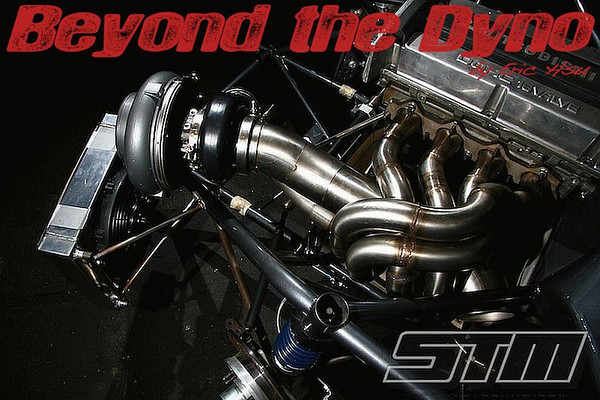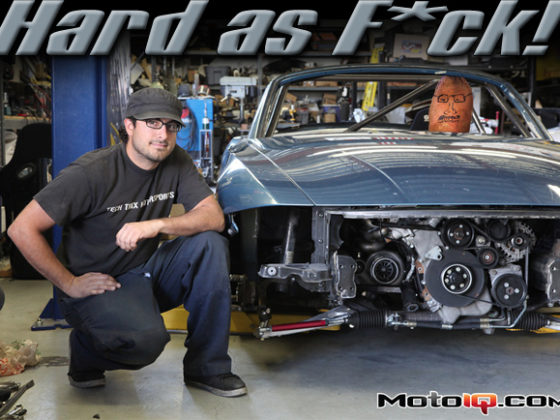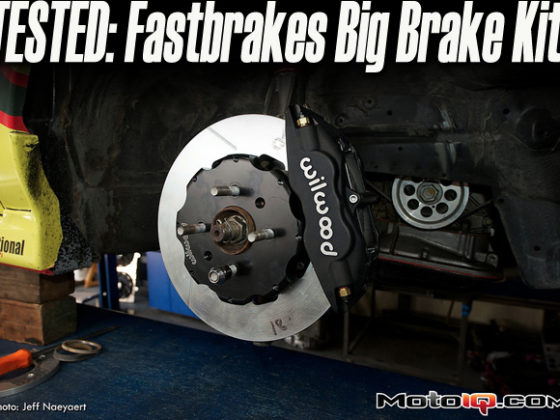,

STM expects HD2 to be able to trap at speeds of 180+ mph once they start turning up the boost later in the season. At these kinds of speeds only one parachute is needed, but some of the tracks in NZ have short shut down areas and the safety cushion of having a second chute is something both Mike and STM wanted. Coupled with the twin chutes is the normal braking system in the car. This includes twin piston Strange callipers on the front and the 4 piston Mark Williams callipers on the rear. All of this is operated by a Tilton pedal box with fully adjustable brake bias.

Bam designed a custom header tank and overflow for the cooling system and had these fabricated by Jono @ Motorsport Fabrications. The finished products are stunning.


Lightweight doors don’t have the rigidity to stay closed at high speeds sometimes. Since Mike doesn’t need any distractions at 180+mph, JBRC door catches have been fitted to the front doors . These clip onto a bracket on the cage after the door is closed and prevent the door from opening at high speed.


NZDRA rules require a large catch tank which is plumbed to collect any blow-by from the engine to ensure nothing gets on the track. Bam fabricated a 4 litre tank which he fitted into the rear of the car and plumbed with -12 lines. The tank is fitted to the rear of the car so that if for any reason there is a problem with the engine and the tank over flows, the excess will be dumped behind the rear slicks. This eliminates the chance of oil or water getting under the slicks and causing Mike to lose control. A simple ball-valve is included to allow the tank to be drained quickly and easily between rounds.

A Peterson remote oil filter mount is fitted to the firewall. This allows STM to use a large Fram racing-type oil filter which has a much larger filtration area. With the remote mount, it is quick and easy to remove the filter for inspections if necessary. In the background you can see the Peterson 4 stage dry sump pump which is driven directly from the crankshaft. This pump includes 3 scavenge stages which draws oil directly from the custom sump. A dry sump system reduces windage losses from oil vapour in the crankcase which provides a more power while offering more reliable lubrication. On the back of the dry sump pump is a Waterman mechanical fuel pump. This is responsible for supplying fuel to the engine, and despite its size, it is capable of supplying enough methanol for well over 2000 hp!

Here two of the in-line fuel filters are visible. The fuel system plumbing is a bit complicated since STM is using twin fuel rails with a total of 8 ID2000 injectors. Mechanical fuel pumps are not very good at providing good pressure at cranking speeds, so an electric primer pump is incorporated to pressurise the system initially and ensure easy starting. The fuel pressure is set to 80 psi which gives the engine around 3700cc/min from each injector. That’s a total of almost 30 litres/minute of fuel flow at 100% duty which means the 5 gallon fuel cell can be emptied in a little over 30 seconds!

In the USA we only really have EVO 8 and 9 valve covers which are magnesium. In the rest of the world, the EVO 4-6 valve covers were aluminum. STM cut out the oil filler and sealed it up with a welded in plate since oil filling is now done at the dry sump tank.

Any drag car running quicker than 8.99 in NZ must have a ‘lower engine containment device’ or what is more commonly referred to as a ‘nappy’. This means if the engine throws a rod or otherwise suffers some catastrophic failure, no oil ends up on the track. Due to the pumps that are mounted off the engine, STM chose to build a tray instead of a nappy. This tray will be filled with an absorbent material which will soak up any oil should the unthinkable happen. Here Bam is making a card template before the final tray is molded in carbon fibre.

The Aeromotive fuel pressure regulator is mounted. These regulators are designed specifically for mechanical pumps and have a very high valve lift to ensure consistent fuel pressure across a wide range of rpm. The Morse cable for the throttle is also visible in this picture. Instead of a normal cable for the throttle, STM is using a solid Morse cable. This is a solid push-pull cable which means that if the throttle jams Mike can actually pull it closed with the loop on the top of the throttle pedal. This is an NZDRA safety requirement.

The engine bay starts to take shape. At this stage most of the fabrication is finished and it is now a matter of running all of the lines and hoses. The car is still fitted with a dummy engine at this stage, but wiring has not been started yet for the Motec electronics.



